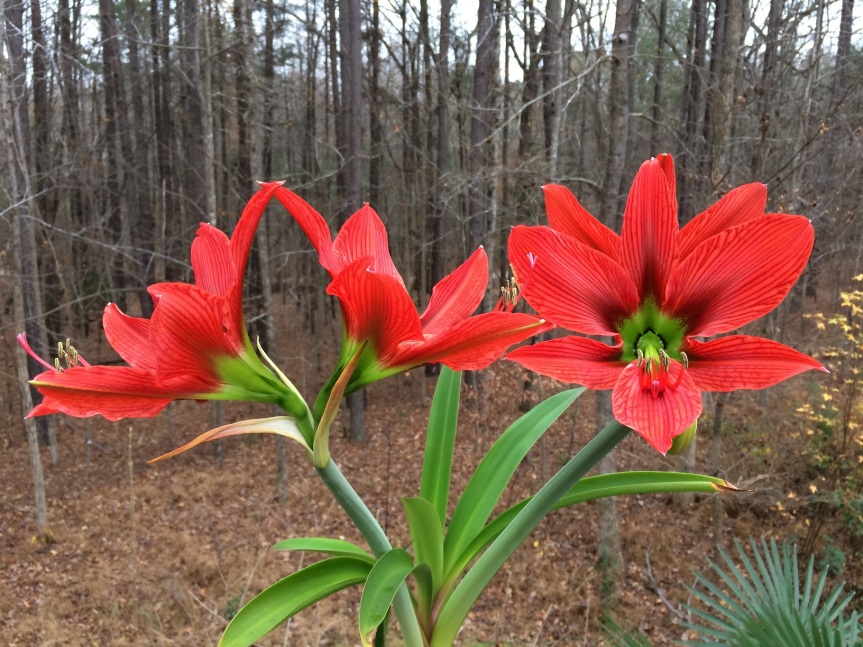
November is the blooming season of one of my favorite tropical plants: Hippeastrum aulicum, the Lily of the Palace*. H. aulicum is a large amaryllid from southern Brazil and Paraguay. It is closely related to the Hippeastrum hybrids (usually labeled “Amaryllis”) that are sold around Christmas time, but with one major difference. The hybrids are derived primarily from Andean species that grow in the ground, while H. aulicum is an epiphyte, growing on the surface of rocks and in large trees. The website of the Pacific Bulb Society has some pictures of H. aulicum growing on branches in its natural habitat.
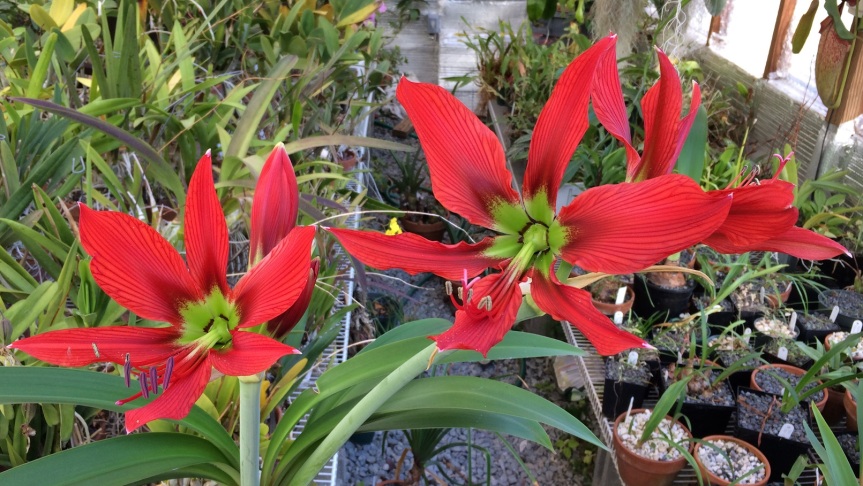
Another difference between H. aulicum and the Andean-derived hybrids is their annual growth cycles. Hybrids are usually purchased for forcing winter blooms, but after a couple of seasons in cultivation, they revert to an annual cycle where they bloom in early spring, grow through the spring and summer, and go dormant in autumn. To bloom again the next year, they require a cool, dry winter rest. In contrast, H. aulicum blooms in autumn, grows through the winter, and goes dormant in summer. My plants spend the summer outside, so they never remain dry for long periods, even when dormant. They are soaked by summer thunderstorms, and when there is no rain I water them once or twice a week. When nights start getting cooler in late September or early October, they begin to grow again. Inflorescences come first, but new leaves usually sprout before the flowers open. Once autumn nights drop into the upper 40s (8-10 C), I move the plants into the greenhouse for the winter.
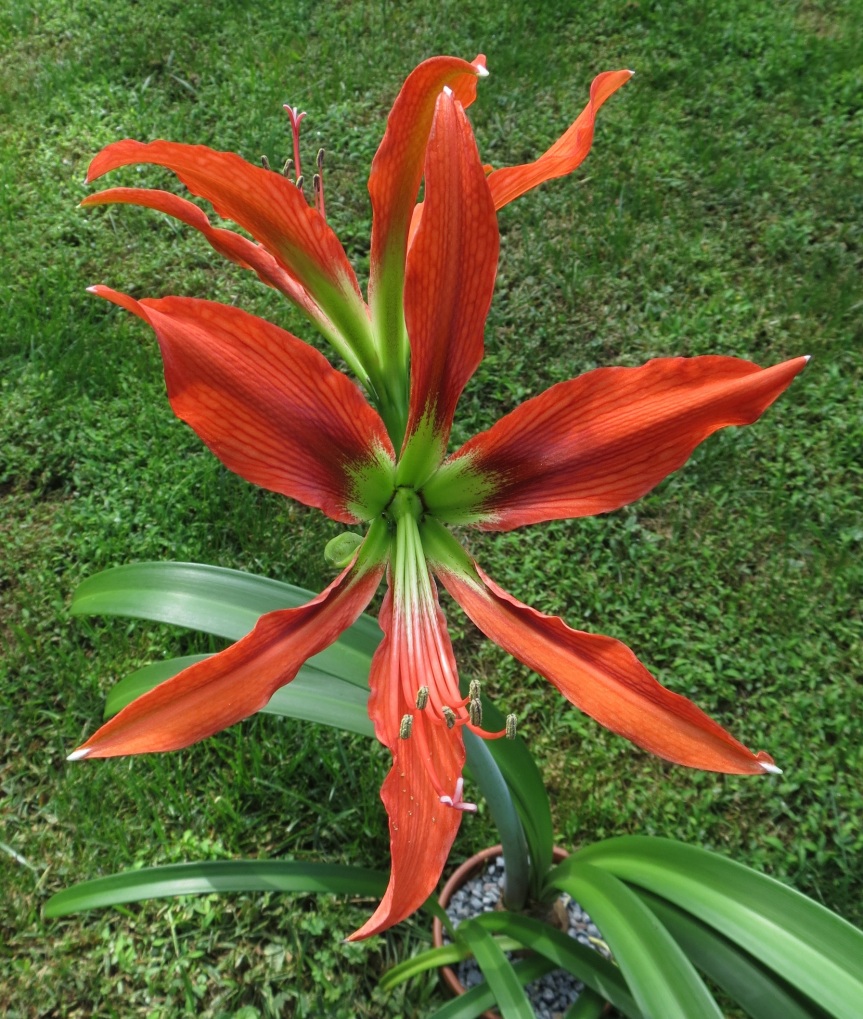
The flowers of my H. aulicum plants differ mainly in the width of the sepals and petals. All are a strong, bright red with darker flares extending from a green patch at the center of the flower. The three sepals are roughly the same size, but the lower petal is generally narrower than the two upper petals, making the flower bilaterally symmetric. The inflorescence generally carries only two flowers, but a healthy bulb can produce two inflorescences with buds that open at the same time. When the flowers first open, the anthers are a beautiful purple until they fold to expose the pollen.
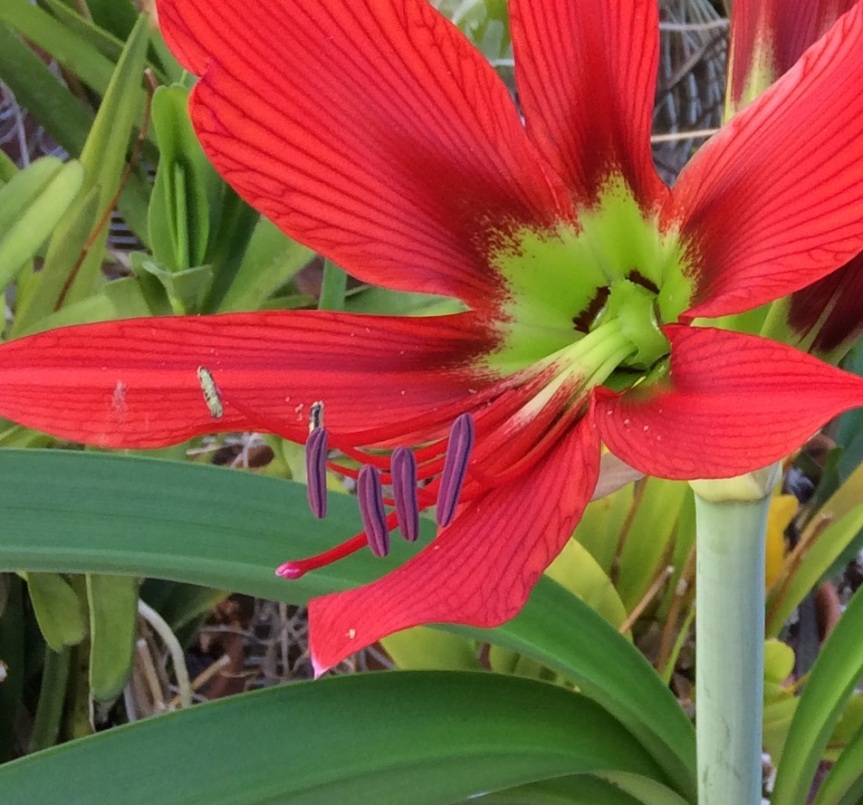
Seed of H. aulicum is occasionally available from online vendors, and seedlings are easy to grow. The papery seeds of H. aulicum, like those of many amaryllids, can be floated in a jar of water covered with cling film until they sprout and then planted in individual pots. This method is particularly useful if you are uncertain what percentage of the rather short-lived seed is viable.
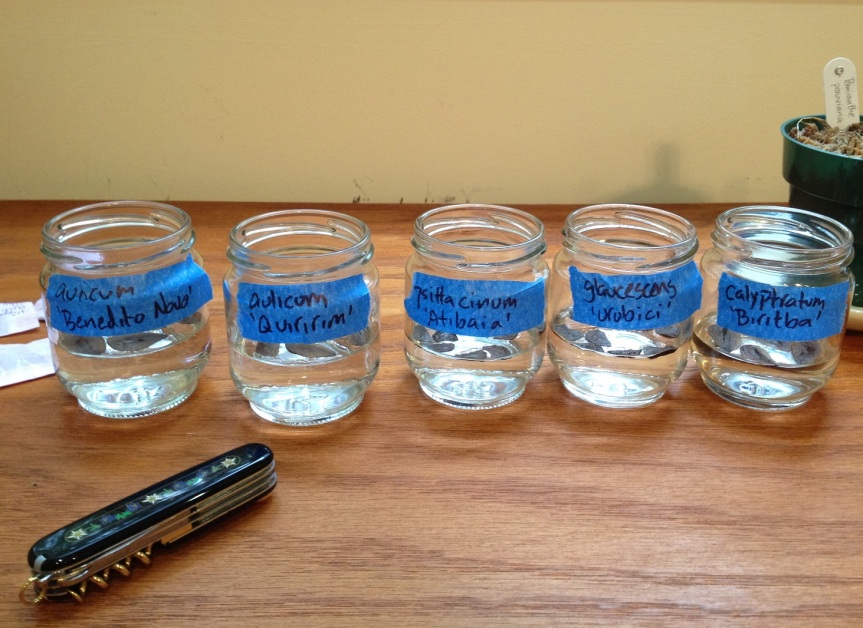
For H. aulicum, I use a very open, free-draining mix of roughly one part commercial potting soil to two parts stalite (permatill). The roots of H. aulicum seem more tolerant of “terrestrial” mixes than those of another epiphytic Hippeastrum, H. calyptratum, but I don’t want to tempt fate. When planting sprouted seeds, I make a hole for the root with a pencil or bamboo skewer, gently press the seed onto the soil surface, and cover it with a thin layer of gravel or permatill. Hippeastrums are susceptible to several viruses that are common in cultivation, so I always use new pots. Growers of hybrid Hippeastrums are often encouraged to plant the bulbs partially raised above the soil to discourage rot, but H. aulicum seedlings will naturally produce exposed bulbs.
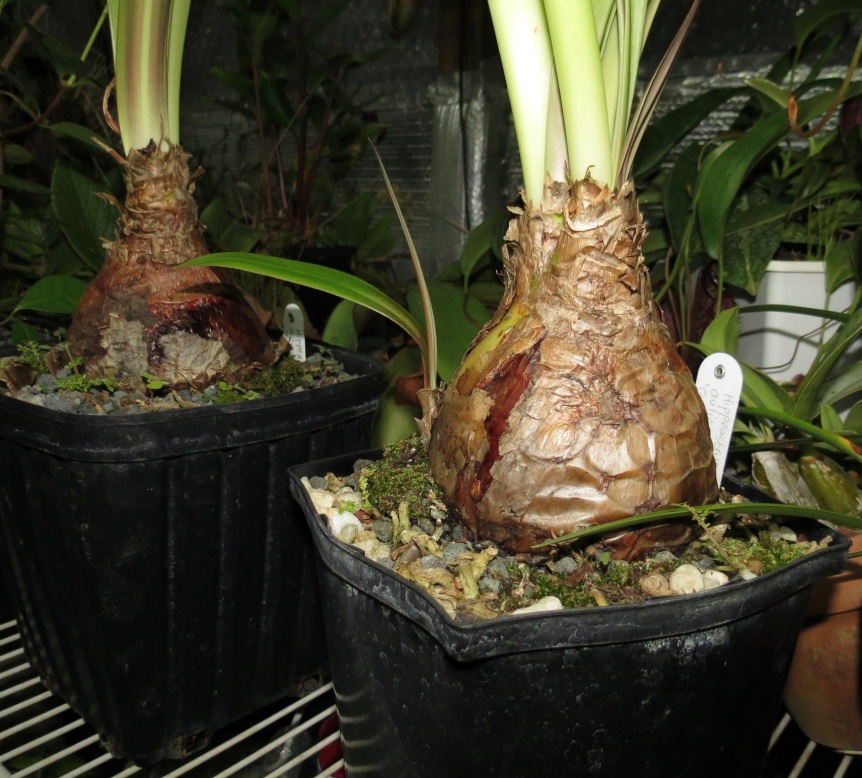
The majority of my seed-grown H. aulicum have bloomed three years after germination.
*I haven’t been able to discover why H. aulicum received this slightly over-the-top common name. Does anyone know?

That thing looks rather sci-fi!. I have seen them in catalogues, but have never grown one. I was just talking to someone earlier about the beladona lily or naked lady that naturalizes here. If it were not so common, it would be cool to grow. I just get rather tires of seeing them everywhere and in the ditches. Yeah, naked ladies in the gutter.
LikeLiked by 1 person
What stunning blooms. If only my christmas amaryllis looked half so refined! The purple anthers are a nice touch too
LikeLiked by 1 person